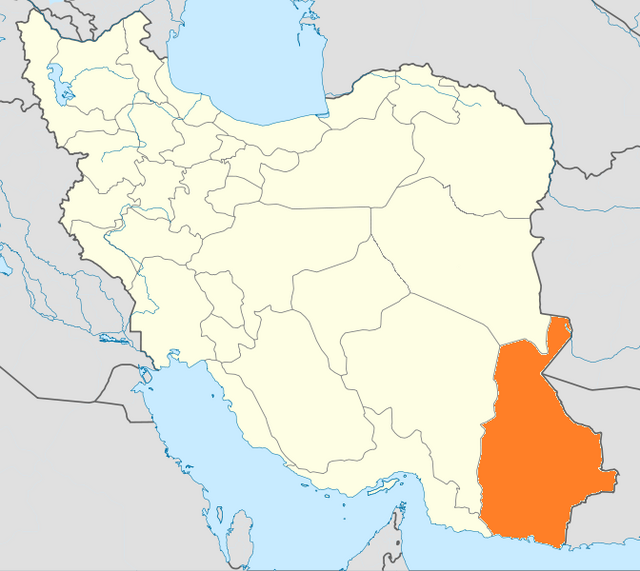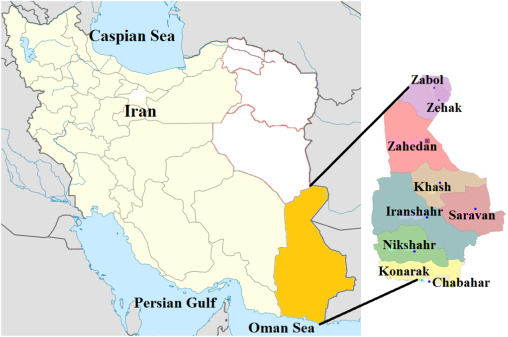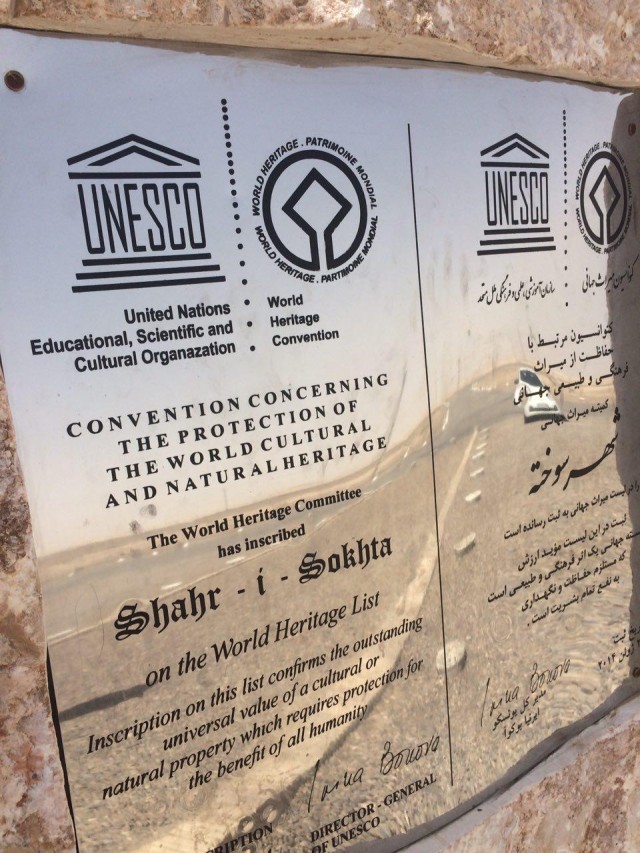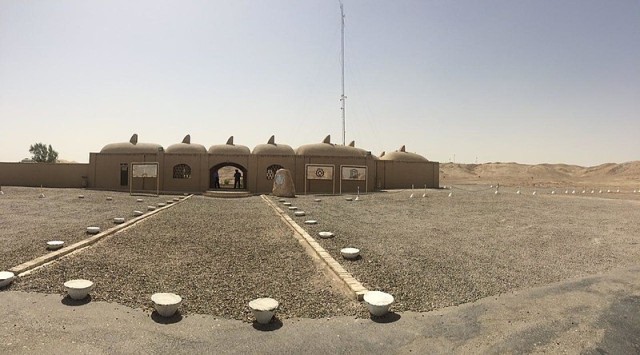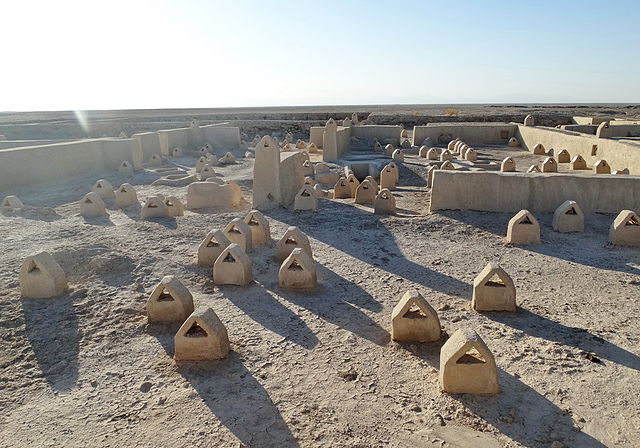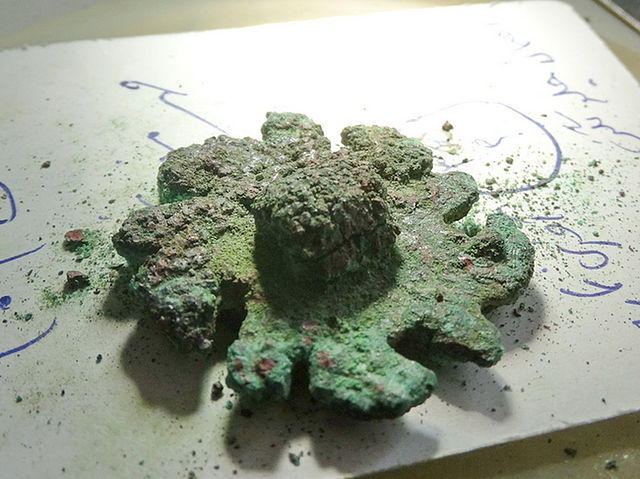
| SHAHR - I - SOKHTA
Sistan and Baluchestan Province, Iran
Sistan and Baluchestan Province, Iran UNESCO World Heritage Site
Location : Sistan and Baluchestan Province, Iran
Region : Sistan
Coordinates : 30°35'43 N and 61°19'35 E
History
Abandoned : 2100 BCE
Periods : Bronze Age
Cultures : Jiroft culture
Shahr-e Sukhteh (meaning "[The] Burnt City"), also spelled as Shahr-e Sukhté and Shahr-i Sokhta, is an archaeological site of a sizable Bronze Age urban settlement, associated with the Jiroft culture. It is located in Sistan and Baluchistan Province, the southeastern part of Iran, on the bank of the Helmand River, near the Zahedan-Zabol road. It was placed on the UNESCO World Heritage List in June 2014.
Plaque identifying Shahr-e Sukhteh registered as a UNESCO World Heritage Site The reasons for the unexpected rise and fall of the city are still wrapped in mystery. Artifacts recovered from the city demonstrate a peculiar incongruity with nearby civilizations of the time and it has been speculated that Shahr-e-Sukhteh might ultimately provide concrete evidence of a civilization east of prehistoric Persia that was independent of ancient Mesopotamia.
Archaeology
:
Entrance to the Burnt City The settlement appeared around 3200 BCE. The city had four stages of civilization and was burnt down three times before being abandoned in 1800 BCE.
The site was discovered and investigated by Aurel Stein in the early 1900s.
Beginning in 1967, the site was excavated by the Istituto italiano per l'Africa e l'Oriente (IsIAO) team led by Maurizio Tosi. That work continued until 1978. After a gap, work at the site was resumed by the Iranian Cultural Heritage and Tourism Organization team led by SMS Sajjadi. New discoveries are reported from time to time.
Most of the material discovered is dated to the period of c. 2700-2300 BCE. The discoveries indicate that the city was a hub of trading routes that connected Mesopotamia and Iran with the Central Asian and Indian civilizations, and as far away as China.
During the Period I, Shahr-e Sukhteh already shows close connections with the sites in southern Turkmenistan, with the Kandahar region of Afghanistan, the Quetta valley, and the Bampur valley in Iran. Also, there are the connections with the Proto-Elamite cities of ?uzestan and Fars. During Period II, Shahr-e Sukhteh was also in contact with the pre-Harappan centers of the Indus valley, and the contacts with the Bampur valley continued.
Shahdad is another related big site that is being excavated. Some 900 Bronze Age sites have been documented in the Sistan Basin, the desert area between Afghanistan and Pakistan.
Helmand
and Jiroft cultures :
This civilization flourished between 2500 and 1900 BCE, and may have coincided with the great flourishing of the Indus Valley Civilization. This was also the final phase of Periods III and IV of Shahr-i Sokhta, and the last part of Mundigak Period IV.
Thus, the Jiroft and Helmand cultures are closely related. The Jiroft culture flourished in the eastern Iran, and the Helmand culture in western Afghanistan at the same time. In fact, they may represent the same cultural area. The Mehrgarh culture, on the other hand, flourished far earlier.
Finds :
Reproduction of drawing on a pottery vessel found in Shahr-e Sookhteh
Eastern residential area of Shahr-e Sukhteh
Cemetery Shahr-e Sukhteh
5000 years old ancient seal of Shahr-e Sukhteh Source :
https://en.wikipedia.org/ |
